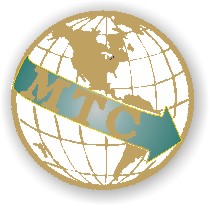| EMPLOYABILITY SKILLS |
Demonstrate the ability to:
-
dress appropriately for work
-
arrive for work on time
-
respond appropriately to supervision
-
follow written and verbal directions
-
listen effectively
-
ask for clarification when further information is required
-
share information accurately and explain procedures to another person
-
take initiative
-
work harmoniously as a member of a team with diverse races, sexes, ages
and cultures, treating all with respect
-
maintain good grooming and hygiene
-
stay on task and use time wisely
-
access trade information from manuals and computers. (i.e. Code requirements,
OSHA requirements, Manufacturer specifications/recommendations, etc.)
-
work an eight hour day
-
change from one task to another and adapt easily to a variety of job task
and situations
-
respect the worth of tools, equipment, materials and other people's property
-
complete assigned tasks
-
work safely
-
accept constructive criticism
-
Demonstrate a positive attitude toward work and people.
-
(Optional) Complete "My Personal Employability Plan" (My-PEP)
|
| GENERAL SAFETY |
-
Demonstrate appropriate safety precautions when performing tasks and using
tools
-
Identify safe work site procedures/practices, including fall protection
and confined spaces
-
Demonstrate the safe and proper use of ladders and scaffolding
-
Locate and properly operate fire safety equipment
-
Select proper safety attire to wear on the job site including safety glasses,
safety shoes, and hard hats
-
Demonstrate the ability to work safely with other workers on the
job site
-
Demonstrate the ability to respond appropriately in an emergency situation
-
Demonstrate the ability to properly lift and carry construction materials
-
Demonstrate the ability to handle and store chemicals safely consistent
with OSHA and MSDS requirements
|
| LADDERS AND SCAFFOLDS |
-
Select, position, raise and lower ladders safely
-
Demonstrate safe and proper use of scaffolding
|
| MEASURING TOOLS AND EQUIPMENT |
-
Identify basic measuring tools (tapes, squares, levels, plumb bobs, etc.)
and their functions
-
Demonstrate the ability to accurately measure to the nearest 1/16".
|
| MATH |
-
Perform math operations (addition, subtraction, multiplication and division)
using whole numbers, fractions and decimals
-
Demonstrate the ability to layout and make angular measurements
-
Calculate square foot and linear measurements
-
Compute volume as related to requirements (cubic yards) for concrete
-
Demonstrate the ability to square corners using the 3-4-5 method
|
| CARPENTRY MAINTENANCE |
-
Demonstrate carpentry safety practices
-
Identify basic hand tools, their function, and how to use the tools safely
-
Identify basic power tools, their function, and how to use the tools safely
-
Identify anchors and fasteners
-
Identify carpentry-related materials
-
Replace/repair/install siding
-
Replace/repair exterior trim
-
Replace/repair roof flashing
-
Replace/repair downspouts and guttering
-
Perform weatherizing procedures
-
Repair drywall/plaster walls
-
Replace/repair interior walls
-
Identify procedures for replacing, repairing and/or installing floor coverings
-
Install wall and/or ceiling insulation
-
Install or replace interior trim
|
| CONCRETE AND MASONRY MAINTENANCE |
-
Demonstrate masonry safety practices
-
Identify basic hand tools, their function, and how to use the tools safely
-
Identify basic power tools, their function, and how to use the tools safely
-
Identify anchors and fasteners
-
Identify concrete-related materials
-
Set forms
-
Mix concrete
-
Patch and/or repair concrete surfaces
-
Mix mortar
|
| SURFACE FINISHING AND SEALING |
-
Demonstrate finishing safety practices
-
Identify basic hand tools, their function, and how to use tools safely
-
Identify basic power tools, their function, and how to use the tools
safely
-
Identify surface finishing-related materials
-
Prepare surface for finish
-
Select finishing materials
-
Prepare finishing materials
-
Apply finishing materials
-
Clean and properly store finishing equipment and materials
|
| PLUMBING MAINTENANCE |
-
Demonstrate plumbing safety practices
-
Identify basic hand tools, their function, and how to use the tools safely
-
Identify basic power tools, their function, and how to use the tools safely
-
Identify anchors and fasteners
-
Identify plumbing-related materials
-
Cut, clean and glue plastic pipe
-
Assemble compression fittings
-
Replace/repair plumbing fixtures and connections
-
Replace/repair install plumbing accessories
-
Clean/replace traps, drains and vents
-
Identify backflow prevention
-
Caulk around fixtures
|
| ELECTRICAL MAINTENANCE |
-
Demonstrate electrical safety practices
-
Identify basic hand tools, their function, and how to use the tools safely
-
Identity basic power tools, their function, and how to use the tools safely
-
Identity anchors and fasteners
-
Identity electrical-related materials
-
Use electrical test equipment
-
Troubleshoot and repair/replace outlets, switches, fuses and fixtures
-
Identify power supplies (e.g., single-phase, three-phase)
-
Wire 120V circuits
-
Wire low-voltage circuits using a schematic
-
Identity and correct defective two-wire and three-wire cords and plugs
|
| ENVIRONMENTAL CONTROL SYSTEMS |
-
Demonstrate safety practices for servicing environmental control systems
-
Identify basic hand tools, their function, and how to use the tools safely
-
Replace/adjust belts and lubricate bearings
-
Clean condensing units
-
Clean evaporator coils
-
Replace furnace or cooling filters
|
| BUILDING SAFETY SYSTEMS |
-
Locate shut-offs for electrical devices and plumbing fixtures
-
Identify potential electrical hazards
-
Check condition of emergency exit floor plans
-
Check and test battery-operated smoke detectors and replace battery if
needed
-
Maintenance emergency lighting systems, exit lights and signs
|
| GROUNDS KEEPING |
-
Use and maintain grounds keeping equipment (mowers, edgers, etc.) safely
-
Identify basic hand tools, their function, and how to use the tools safely
-
Maintain/police grounds
-
Prune trees and shrubs
|
| SWIMMING POOL MAINTENANCE |
-
Explain basic daily pool operations and water tests
-
Explain spring start-up and fall shut-down procedures
|
SNOW REMOVAL
(only where appropriate, not mandatory to complete) |
-
Remove snow/slush
-
Remove ice with ice chippers/scrapers
-
Prevent slip hazards using approved materials (e.g., chemicals, sand, ice
melt)
|



